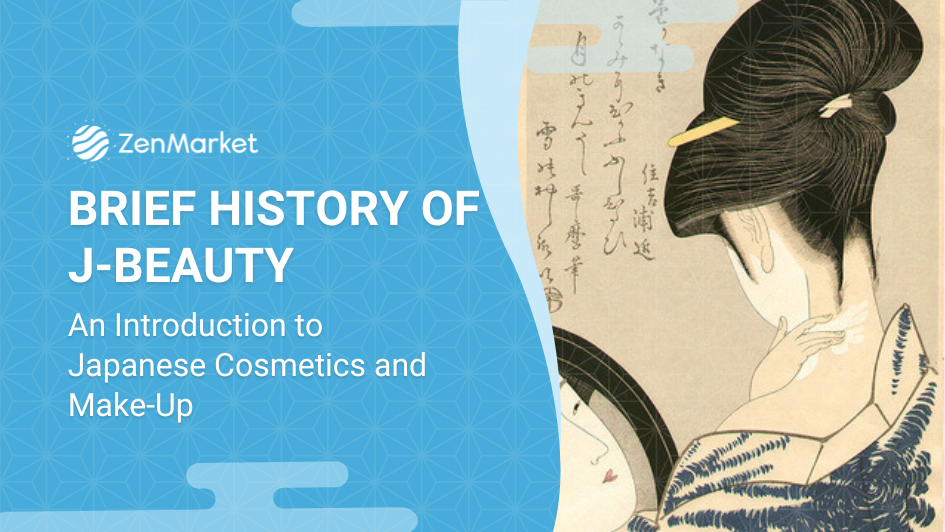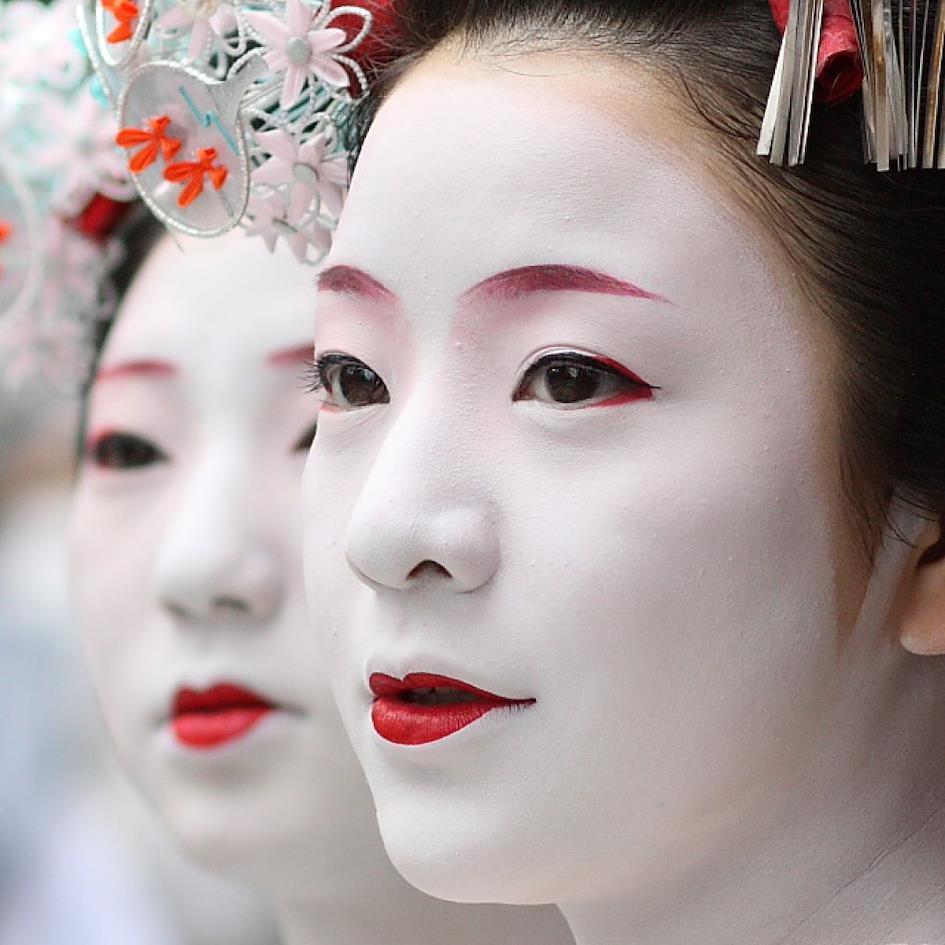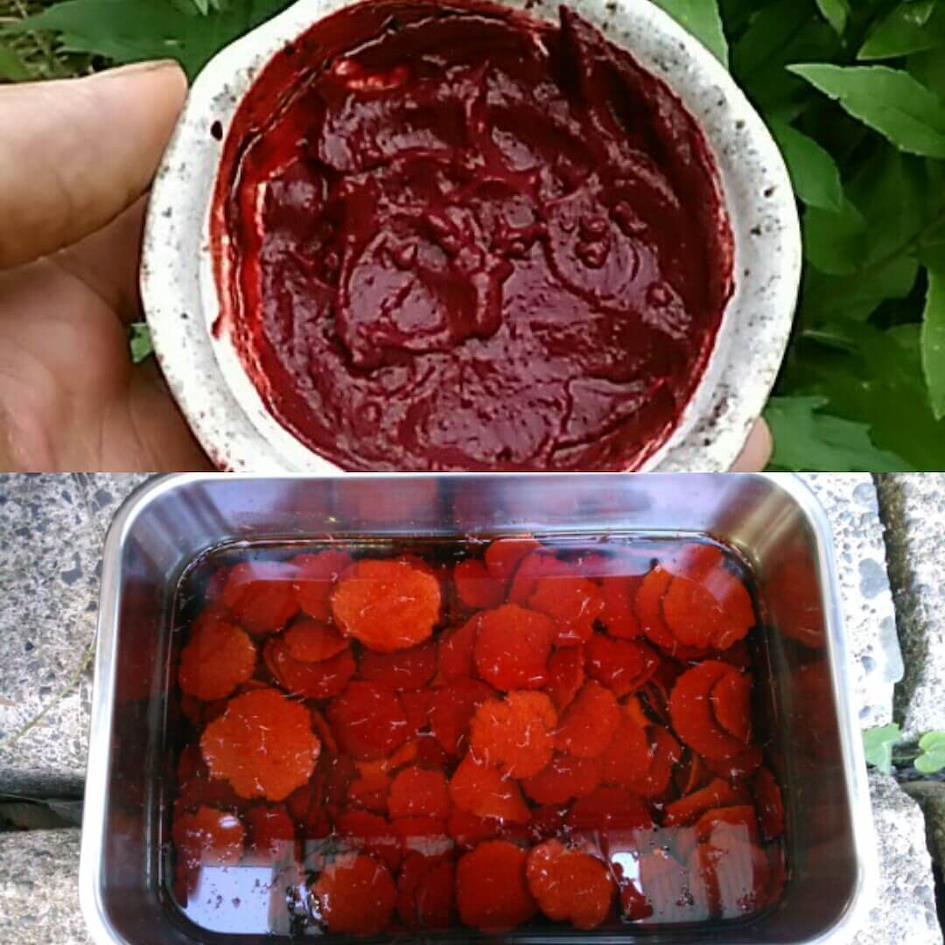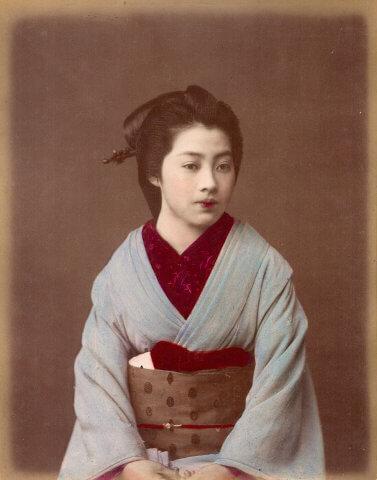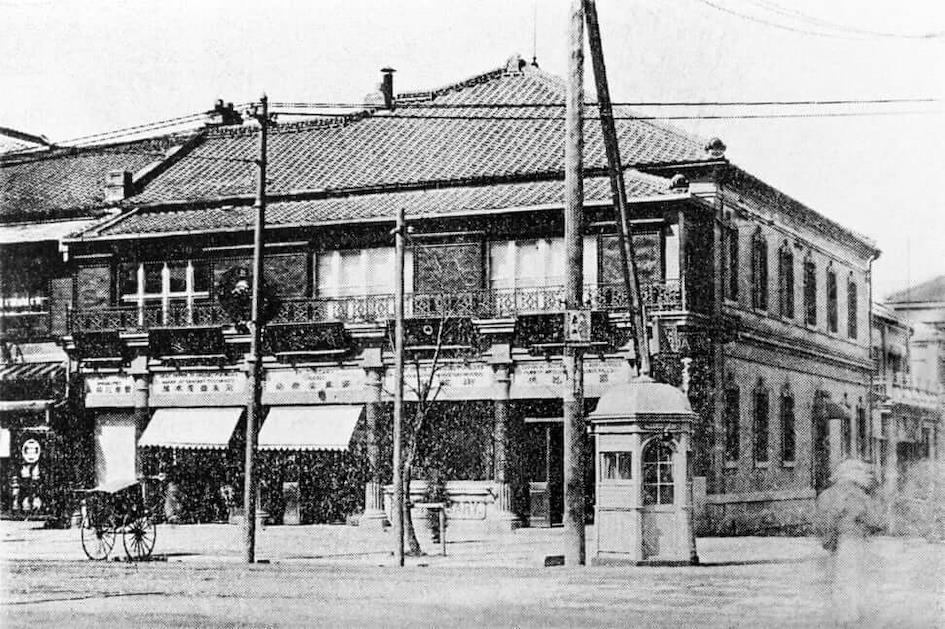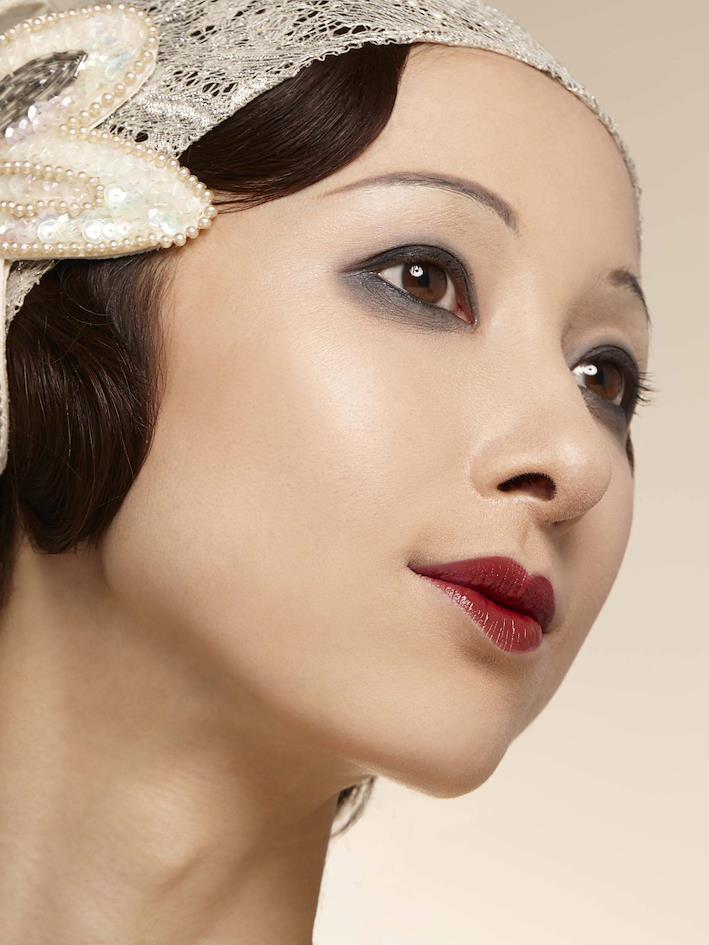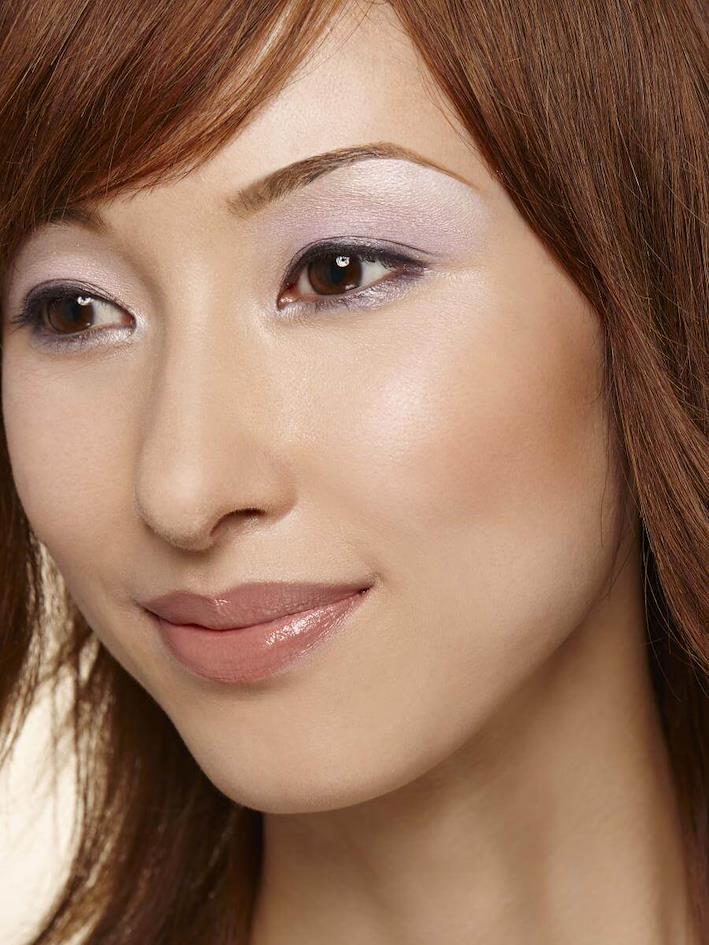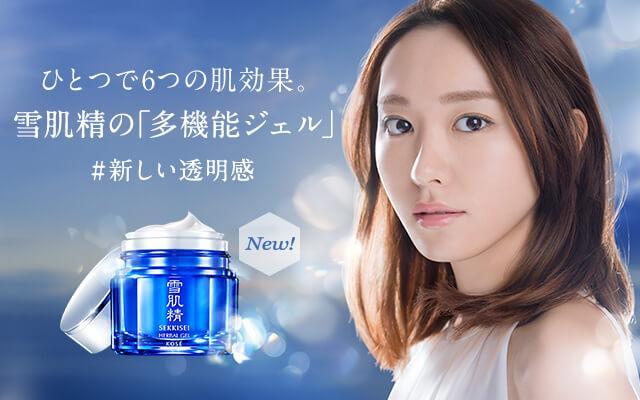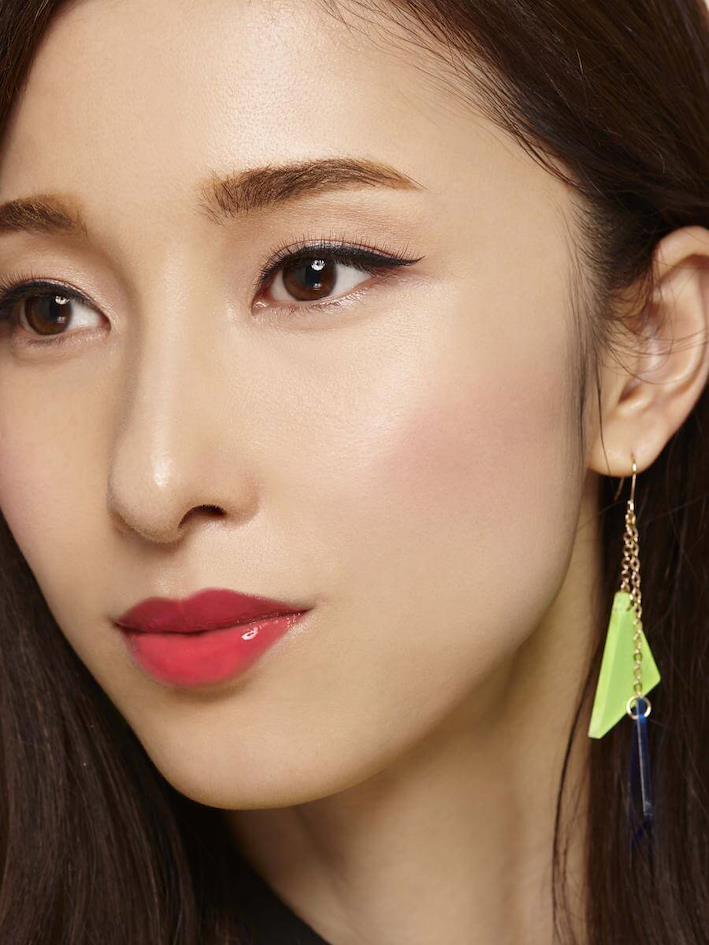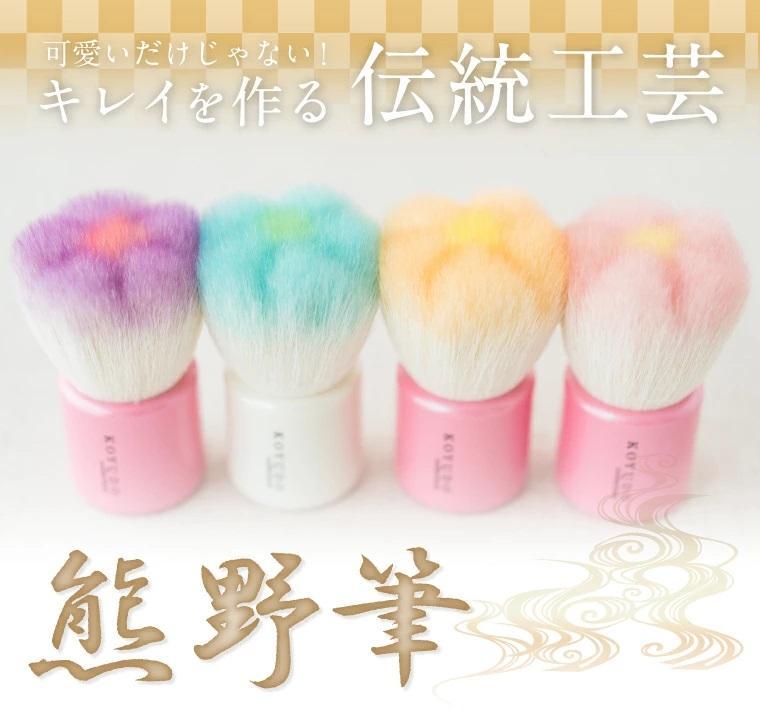[ad_1]
For many years, Japanese makeup and beauty products have been loved by people. From ancient beauty practices to today’s stylish looks, Japanese beauty trends have changed a lot. This article is a quick trip through history, showing how J-beauty has transformed over the years.
Firstly, a summary of the transition of Japanese beauty trends in Japan from the Heian period to now.
| Era/Years | Makeup and Cosmetic Trends in Japan | Cosmetic Products Used |
|---|---|---|
| Heian Period | Use of white powder, artificial eyebrows, and blackened teeth |
|
| Edo Period |
Incorporation of cosmetics into daily lives. Tri-color palette – Red, White and black. |
|
| Meiji Period | Ban on teeth blackening and shaving eyebrows. | Lead-free face powders |
| 20th Century | Western influence – Short hair, Stick lipstick, Bright colors. | Different shades in face powders. |
| Post-war | Vibrant pinks with purplish tints and softer hues. | Synthetic products influenced by the American mass media. |
| Present Time | Obsession with white, pale skin, glowing cheeks, enhanced eye bags, brighter colors, and foundation closer to natural skin tone. | Popularity of organic ingredients, especially for skincare. |
1. Ancient Japan – Heian Period (Late 6th Century – 12th Century)
Japanese cosmetics saw a massive shift during this era, moving from Chinese-inspired makeup to Japanese aesthetics. Cosmetics used back in the late 6th Century were red pigment and white powder. Women used to keep their hair long and straight and repainted their eyebrows. Only the elites of the society used to do makeup during this era.
-
The Teeth Blackening Trend
One interesting and weird trend that started in the Heian period was ohaguro (お歯黒), or “the blackening of teeth.” Some records mention that married women widely did this practice to look less attractive and avoid any extra-marital affairs. However, as per other records, the teeth blackening procedure was only done by breastfeeding mothers.
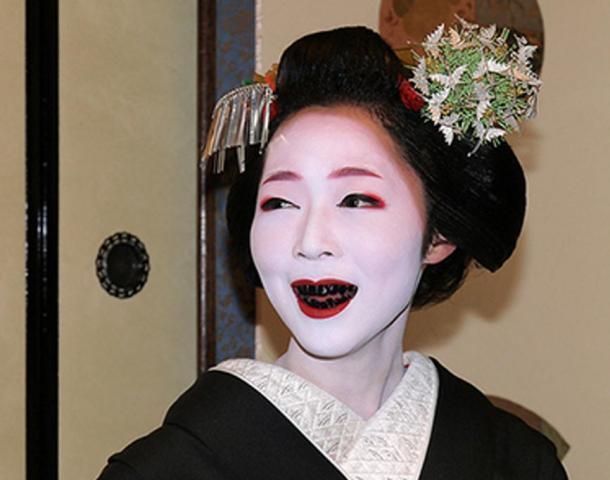
-
Ingredients Used in Ohaguro Solution
The ingredients used to create the blackening solution were Iron filings, Vinegar, Ferric acetate, Tannin from vegetables or tea, and Rice wine. Spices like cloves and cinnamon were added to enhance the taste of the solutions.
2. Edo Period (1603 – 1868)
The Edo period saw the rise of the merchant class, leading to the incorporation of cosmetics into the daily lives of women. During the early Edo period, women were given detailed dos and don’ts on etiquette, including how to use cosmetics.
-
Key Makeup Trends During the Edo Period – The Tri-Color Palette
The main makeup trends in Japan during the Edo period focused on a palette of three colors: red (lip rouge, fingernail polish), white (face powder or oshiroi (お白い), and black (tooth-blackener, eyebrow pencil).
Women were especially concerned with applying face powder on the face and neck, as white skin was regarded as the essence of a beautiful woman. Significant makeup trends during this period were heavier lipstick application, blackening of teeth, and shaving off natural eyebrows.
-
Ingredients Used in White Face Powder
The white face powder was initially made from rice powder and clay soils. As its popularity grew and more women painted their faces white, manufacturers started making the powder with deadly white lead imported from China. The powder was mixed in water and applied with hands or a flat brush.
-
The Rouge Stain
Similarly, the rouge stain was first made from safflowers and applied to the fingernails, cheeks, and lips. As the demand grew and safflowers became expensive, more synthetic ingredients were introduced to these cosmetics.
Also Read: Must-Buy Makeup in Japan | Japanese Makeup Shopping Guide.
3. Meiji Period (1868 – 1912)
The Meiji period in Japan brought in the “Civilization and Enlightenment” movement, encouraging rapid modernization. The Empress Meiji stopped blackening her teeth in 1873, and soon, this became an awakening trend for the rest of the women. Traditional practices of shaving eyebrows were quickly banned.
It was in 1877 when cases of lead poisoning were at their peak, and the development of lead-free face powders was initiated.
-
The Birth of Modern J-Beauty
The lead-free white face powders finally hit the market in 1904. Shiseido, one of the most famous Japanese beauty brands, was founded in 1872 in Tokyo. This brand introduced West-inspired beauty and skin care products for the modern woman of Japan. Other big names in the cosmetics industry emerged during the new era, like KOSÉ and Sekkisei.
4. 20th Century
It was when the economy started picking up, and Western trends started getting popular. Short hair and Western clothing became the new norm. The “modern woman” or moga started using convenient and quick makeup.
Brands started making face powders in different shades of skin tones rather than the traditional white. New pigmented dyes were used in the tube lipsticks along with the classic red. Many Japanese skincare products came on the market during the 1910s.
-
Makeup Trends 1920s to the 1950s
The 1920s makeup look in Japan had thin, sagging eyebrows, droopy eyes, and thin lips. A decade later, in the 1930s, trends changed to arched eyebrows and enlarged lips. Post-World War II in the 1950s, makeup trends shifted to thick eyebrows and lit eyes.
5. Post-World War II
American media heavily influenced the post-war makeup era. Thanks to the magazines and movies, women started picking up makeup trends from the West, like lipsticks in pink and purple. In the 1960s, the trend in cosmetics shifted to a focus on makeup for the eyes and mouth. This includes bold lips and thick eyebrows.
-
Late 1990s to the Present
Towards the end of the 20th Century, women started moving towards having thin eyebrows, dyed brown hair, and makeup that made their faces look smaller.
6. The Present Time
Japanese makeup trends shifted to softer shades, giving a sense of peace and serenity. Present-day Japan is known for its extensive range of cosmetics and skincare products. Although women have stopped painting their faces white, the obsession with white, pale skin is still visible in Japanese makeup trends.
Using sunscreen and UV-protective clothing also indicates the need for a brighter, non-tanned skin tone. Today’s beauty trends in Japan focus on flawless, spotless, more radiant, and healthy skin. The word bihaku (美白) which means beautiful and white in English, is found in many modern beauty products.
Shop Sekkisei Products from Japan
No wonder why Japanese products are so famous for anti-aging and correcting hyperpigmentation. You can also see the obsession with ‘kawaii’ elements in makeup, like glowing cheeks, enhanced eye bags, brighter colors, and foundation closer to natural skin tone.
-
The Transition Toward Organic Beauty
New-age Japanese cosmetics and skin care products are gaining popularity because of natural ingredients. Some of the popular organic ingredients used in J-Beauty products are:
- Camellia Oil: Also known as Japanese Rose (Tsubaki-oil), it deeply nourishes the skin. In the older times, it was used to remove heavy performance-makeup. The oil feels light on the skin and is rich in Vitamins A, B, D, and E. It replenishes the skin barrier and improves elasticity.
- Rice: Japan and rice are inseparable. It is used in many skincare products as it exfoliates the skin (rice flour), brightens the skin (rice water essence), and moisturizes (rice bran oil). Rice also has anti-inflammatory properties, which soothe the skin, and its rich vitamin E content acts as a natural antioxidant to fight aging. KOSE has a rice-based cosmetic line called “Maihada”.
- Sake: Japanese Sake or rice wine not only tastes good but also has a fantastic effect on the skin. From serums to cleansers, many organic makeup brands in Japan use Sake as one of the ingredients in their products. It helps brighten the skin, has anti-inflammatory properties, and fights aging.
A popular skincare product made out of Sake is “Nihonshu no Keshosui 日本酒の化粧水” by a brewery named Kikumasamune Brewery. The product is a highly moisturizing skin lotion.
Also Read: 14 Organic Cosmetic Brands from Japan
-
The Rich Heritage of Japanese Makeup Brushes
The brush-making tradition in Japan can be traced back over 1300 years. The central hub for designing high-quality bushes in Japan is Kumano (熊野筆) in Hiroshima. One of the best things about Japanese makeup brushes is that they are handmade by the best artists. Manufacturers usually make these brushes from natural animal hair. This craftsmanship developed in the beauty industry and Japanese make-up brushes became well-known for its softness and high quality.
Japanese makeup brushes or keshoufude (化粧筆) come in different types for various product applications. Some of these are:
- Foundation brushes
- Blush brushes
- Powder brushes
- Eye brushes
Some of the best brands of Japanese makeup brushes are Hakujodo, Koyudo, Chikuhodo, and Mizuho. Look at these cute flower-shaped cheeks blushes! Add them to cart with ZenMarket!
Shop Make-Up Brushes from Japan
Just like its culture, the history of Japanese cosmetics is quite rich on its own. Japanese beauty products are popular amongst people across the globe because of the ingredients used in the products. ZenMarket offers you a fantastic range of the best beauty products to buy in Japan.
Have you signed up for ZenMarket yet?
ZenMarket is the place to get your hands on goods directly from Japan!
[ad_2]
Source link

